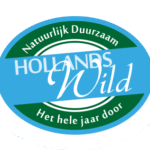
The Royal Dutch Hunters’ Association has launched the “Safe on the Road, That’s What We Hunt For” campaign to raise motorists’ awareness of the risks of wildlife crossing the road. The campaign also offers tips on preventing collisions and what to do if you do hit an animal.
Last year, the association advocated that knowledge about the risks of crossing wildlife should be included in the CBR driving theory exam. However, the exam center states the following: “We test whether a novice driver is ready to drive, whether they know the traffic rules, recognize hazards, have sufficient traffic insight, and make the right choices.” According to the CBR, crossing wildlife is not a significant addition to the ultimate goal of the exam.
In recent decades, the number of roe deer in our country has grown significantly. Shortly after the Second World War, there were 5,000 roe deer in the eastern Netherlands. Now, there are more than 100,000 roe deer in every province of the country. However, this also has a downside: a growing number of collisions with animals in the Netherlands and rising damage claims. The Dutch Association of Insurers reported in early 2021 that the average damage claim after a collision with a (wild) animal had risen from €1,632 in 2017 to €1,921 last year. A significant increase, indeed.
The number of collisions with deer remained roughly the same or even increased last year, despite less traffic due to COVID-19. According to reports from Faunabeheer in the four provinces (Flevoland, Gelderland, North Holland, and Utrecht) where the Hunters’ Association is campaigning, there are an average of 42 collisions per week in the provinces combined.
The urgency of preventing (wildlife) collisions therefore remains.
According to Willem Schimmelpenninck, director of the Hunters’ Association, hunters contribute to road safety. “Our members map locations where many wildlife collisions occur. They then consult with municipalities, road authorities, and provinces to implement measures in these locations as wildlife deterrents. We also ensure that the deer population in these areas doesn’t become too large for the area.” The Hunters’ Association also advocates for uniform national regulations and management of deer, not just around the areas where most collisions occur.
In November and December, the “Safe on the Road, That’s What We Hunt For” campaign is raising awareness about collisions with deer. Especially during the current winter season, when winter time has just begun and there’s more traffic at dusk, the risk of collisions with deer also increases. The campaign uses various social media channels, among other things, to provide drivers with tips on preventing collisions with deer and how best to handle them. For example, you are required to report a collision with deer to the police so they can call a hunter authorized to find the injured animal and, if necessary, euthanize it. The campaign also includes a special deer croquette campaign, school visits in the four provinces, and radio spots. More information is also available on the campaign website daarjagenwijvoor.nl .